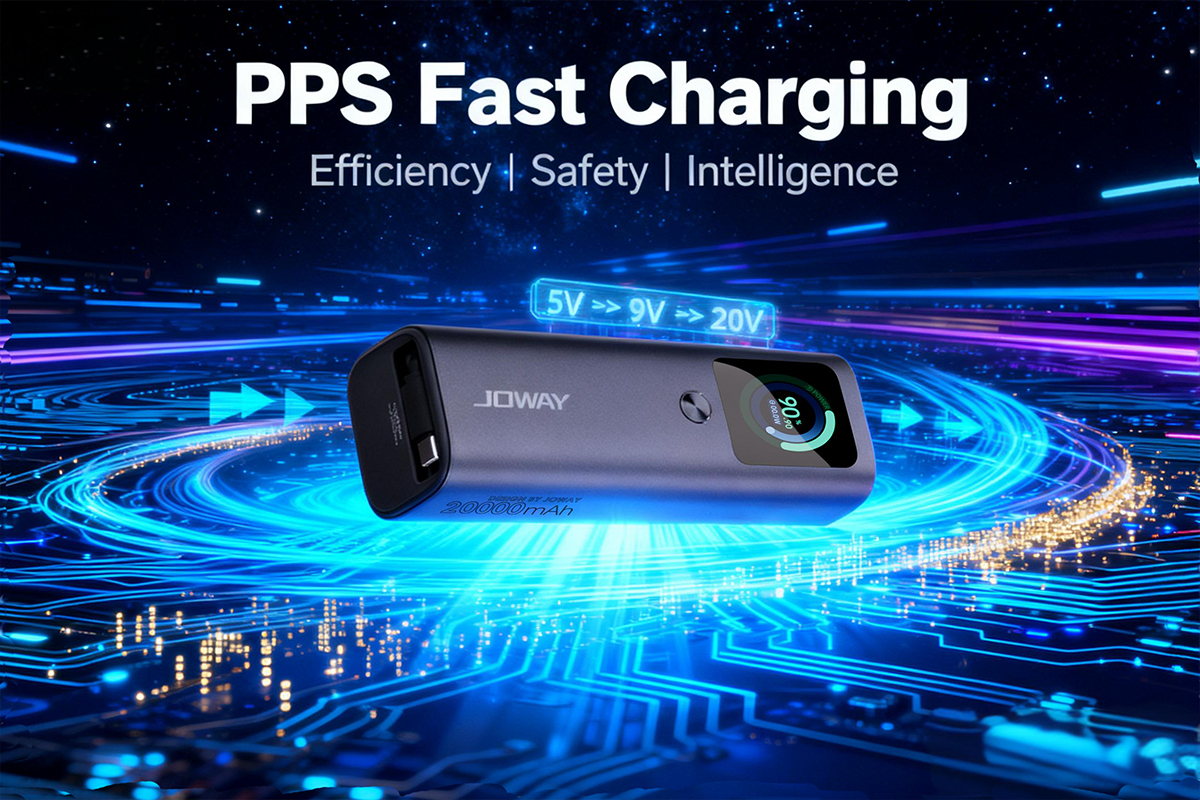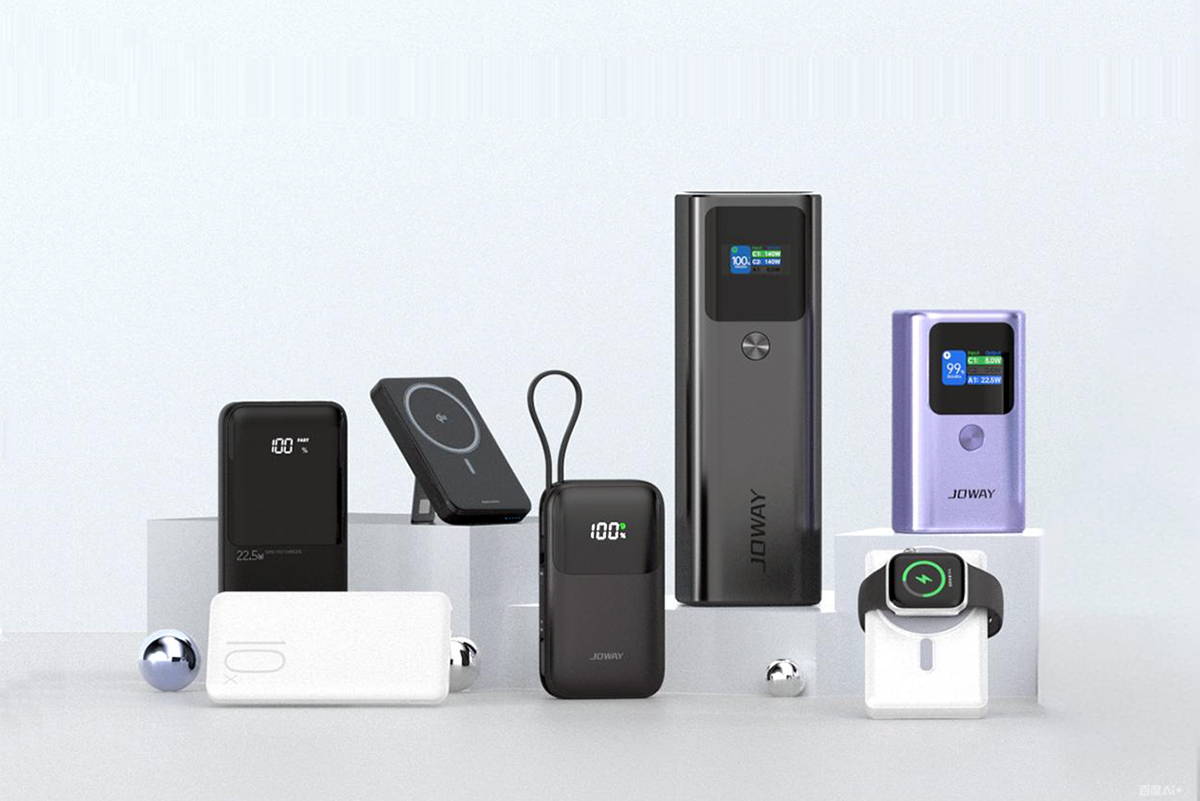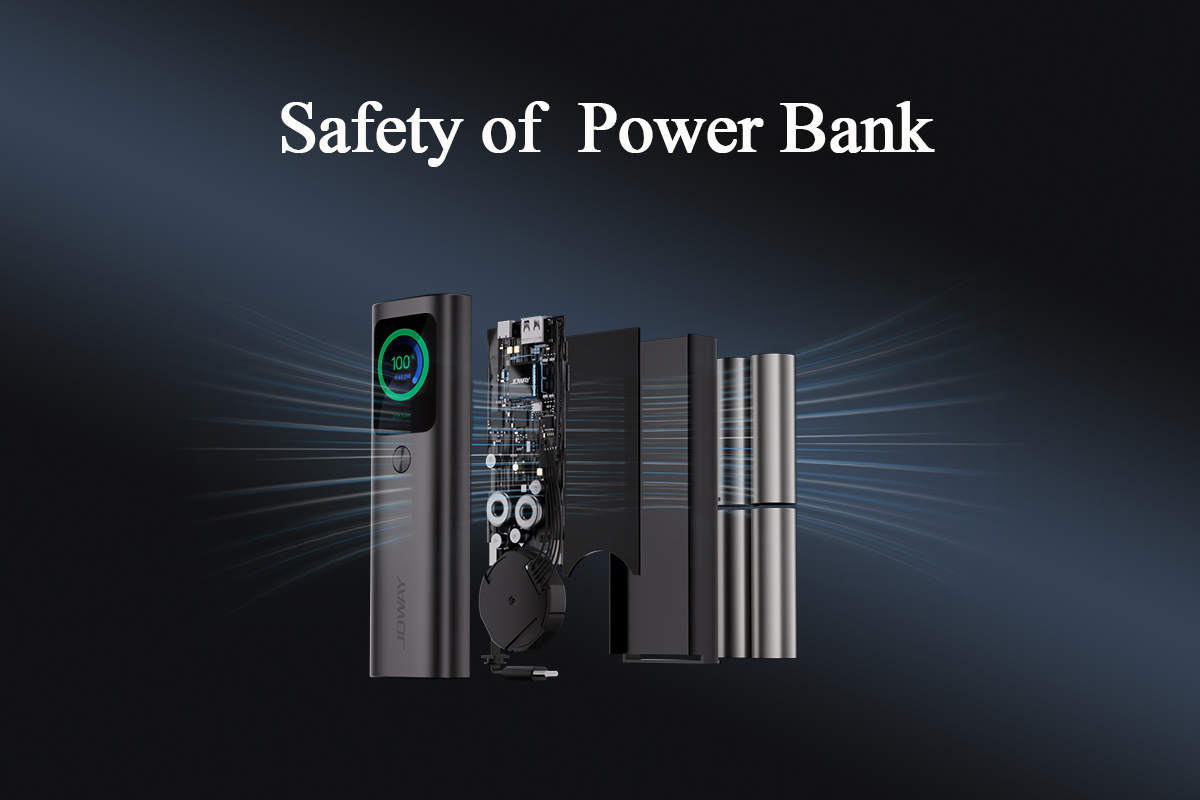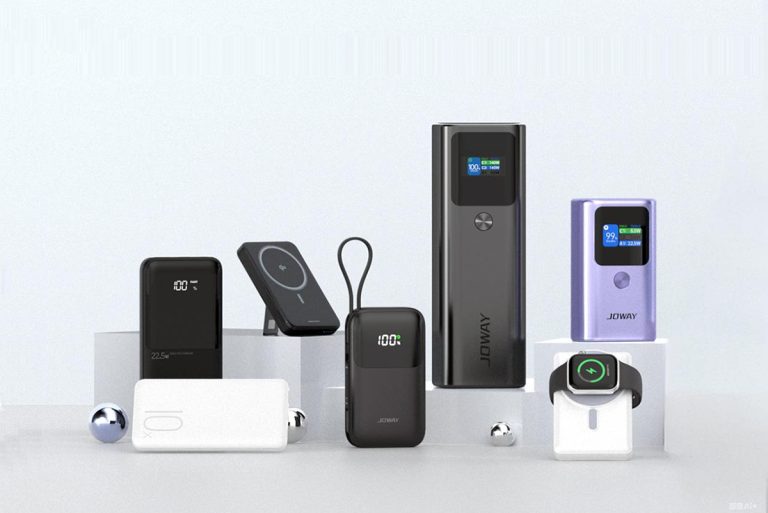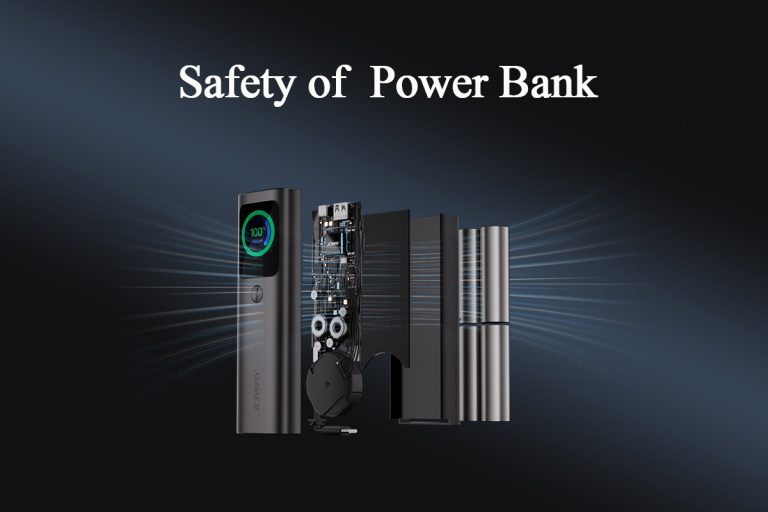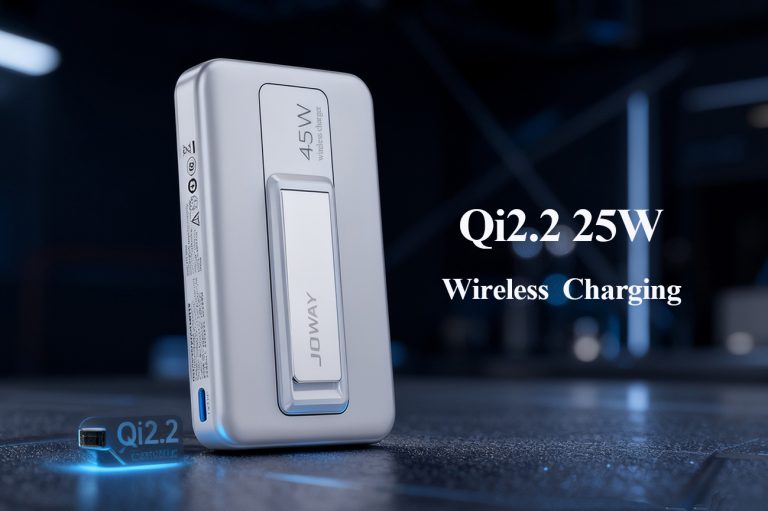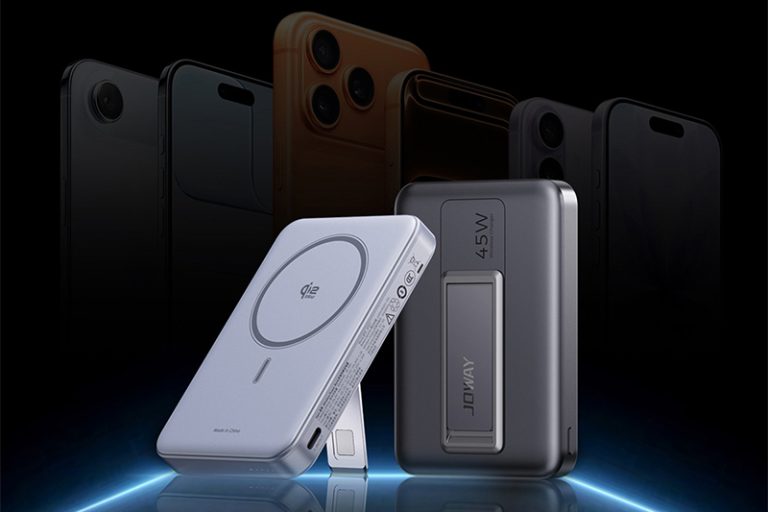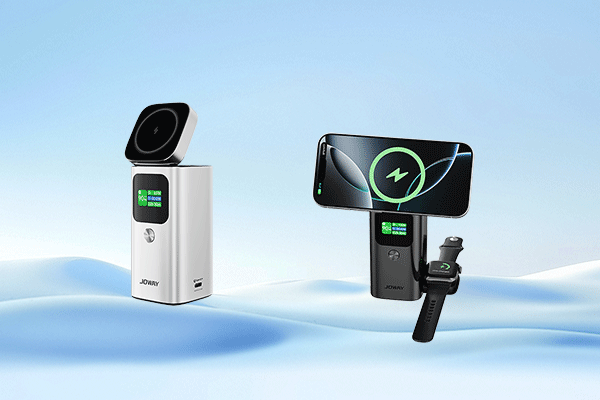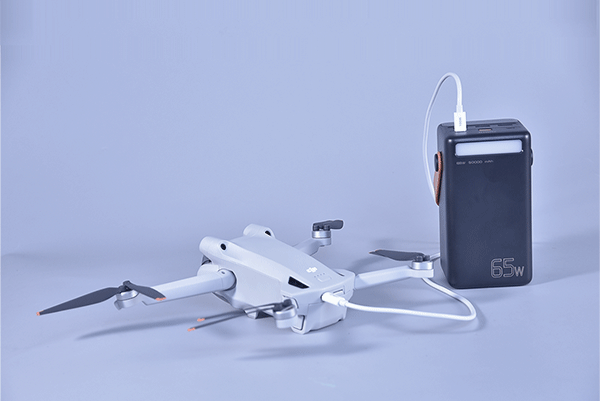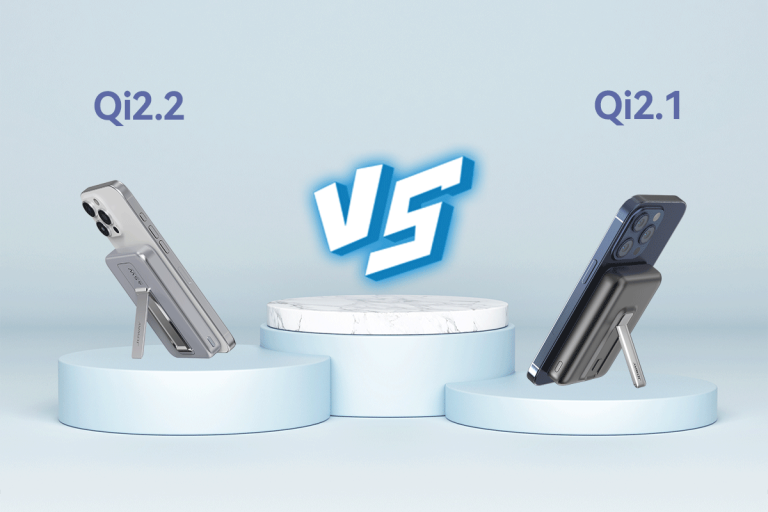The Xiaomi 17 series has been officially announced with support for 100W PPS fast charging, putting the PPS protocol back in the spotlight. For power-bank OEMs/ODMs, what does this mean for your product roadmap? Should you adopt PPS in upcoming designs? This article summarises what PPS fast charging is, highlights its key benefits, and shares practical customisation guidance for power-bank projects.
1 What is the PPS fast-charging protocol?
The PPS (Programmable Power Supply) protocol forms part of the USB Power Delivery (PD) 3.0/3.1 standards. It enables more flexible power negotiation between the device and the charger. By offering programmable voltage between the fixed voltage levels, PPS lets the device adjust charging power in real time based on battery condition and demand, resulting in more efficient charging.
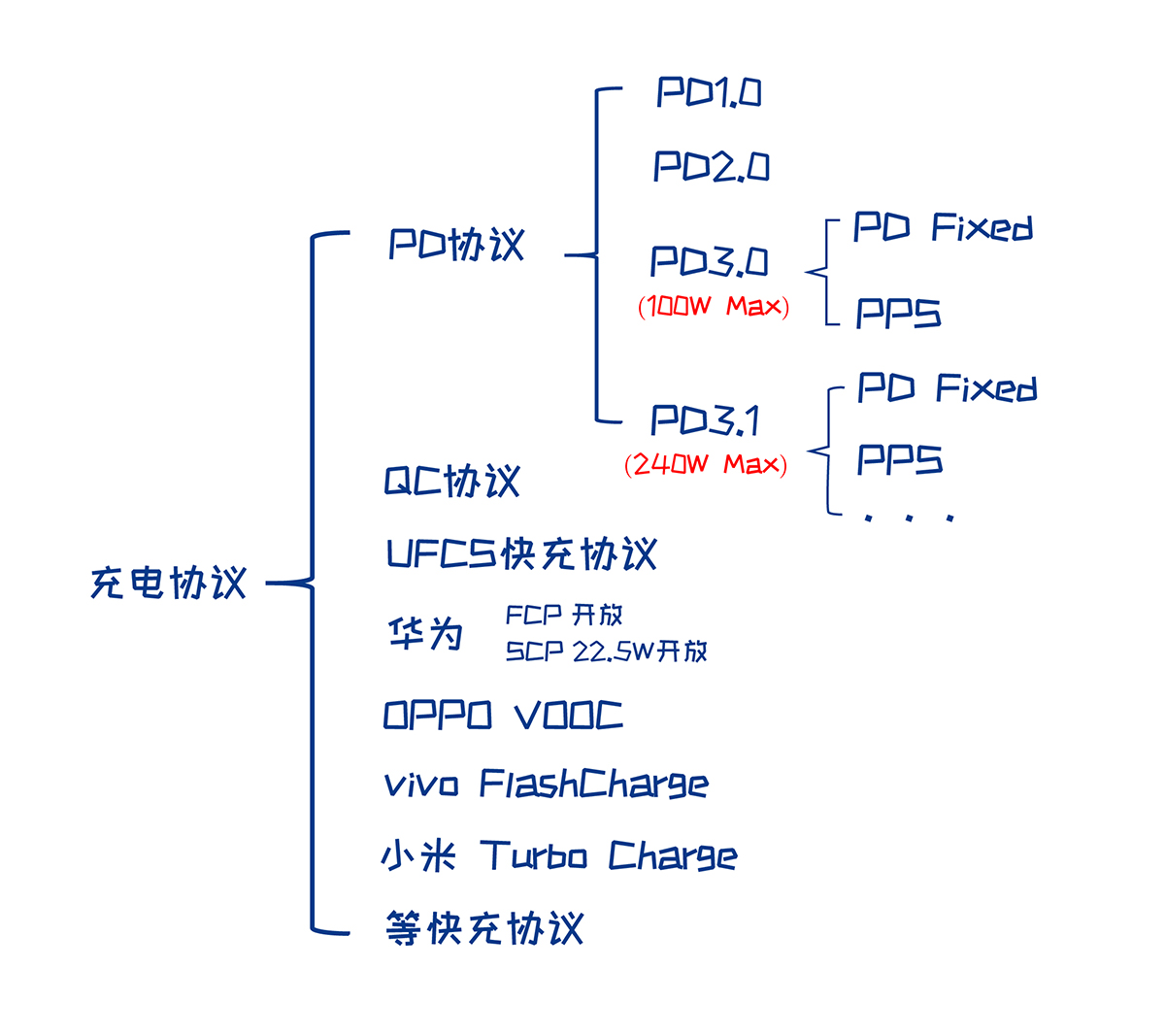
PPS fast-charging protocol schematic
Common PPS output profiles
- PPS 22–27W: 9V at 2.5–3A (variable step), peak power 22–27W. Example: Xiaomi 14 series.
- PPS 45W: 9V at 5A (variable step), peak power 45W. Example: Samsung S23/S24 Ultra.
- PPS 100W: 20V at 5A (variable step), typical maximum around 50–70W. Example: Xiaomi 17 series.
Table 1: Typical PPS output profiles
| PPS profile | Variable voltage | Maximum current | Maximum power | Typical devices |
| 1 | 3.3-5.9V | 3A | 18W | Phones/Tablets |
| 2 | 3.3-11V | 3A | 33W | |
| 3 | 3.3-16V | 3A | 45W | |
| 4 | 3.3-21V | 3A | 60W | |
| 5 | 3.3-21V | 5A | 100W |
2 Four core advantages of the PPS protocol
For brands, integrating PPS into power bank OEM/ODM designs can deliver the following competitive advantages:
1) Flexibility:
PPS lets the device select a voltage finely tuned to current demand between the fixed steps, rather than being constrained to a small set of fixed levels.
2) Efficiency:
By more precisely matching the device’s voltage requirement, PPS minimises conversion losses and optimises charging efficiency.
3) Compatibility:
PPS aligns with the USB PD standards, enabling interoperability with a broad range of chargers and devices.
4) Safety:
Built-in protections—over-temperature, over-voltage and over-current—enhance charging safety.
3 What is the relationship between PPS and PD 2.0/PD 3.0?
To distinguish PPS from PD, it helps to clarify how they relate. At the standards level: PD 3.0 = PD 3.0 (Fixed) + PPS (programmable). PD 3.0 (Fixed) extends PD 2.0 by adding additional fixed voltage steps…
In practice—and in marketing materials—“PD 3.0” is often used to mean PD Fixed only, while “PPS” denotes PD 3.0 PPS. Chargers that support PPS typically cost more than models limited to PD 3.0 Fixed, and PPS-capable chargers remain backward compatible with PD 3.0 Fixed.
Consequently, a device labelled as PD 3.0 may implement only the Fixed profiles and not PPS. Conversely, any device that supports PPS will inherently support the PD 3.0 Fixed profiles, resulting in strong overall compatibility.
Table 2: PD 3.0 Fixed (fixed voltage) standard output profiles
| PD3.0 Fixed | Fixed voltage | Maximum current | Maximum power | Typical devices |
| 1 | 5V | 3A | 15W | Phones |
| 2 | 9V | 3A | 27W | Phones/Tablets |
| 3 | 15V | 3A | 45W | Tablets/Laptops (thin-and-light) |
| 4 | 20V | 2.25A | 45W | Tablets/Laptops (thin-and-light) |
| 3A | 60W | |||
| 5 | 20V | 5A | 100W | Laptops (high performance) |
| 6 | 28V | 5A | 140W | Laptops (high performance) |
Overview of PD 3.0 Fixed standard outputs
Selection guidance: Joway is a specialised, direct-source power bank manufacturer. For mid- to high-end power bank programmes, we recommend adopting a combined “PD 3.0/3.1 + PPS” solution. This delivers a one-step specification, maintains compatibility with both current and future mainstream devices, and strengthens product differentiation.
4 PPS fast-charging power bank customisation recommendations
Today, many handsets from leading brands—Honor, Xiaomi, Samsung, Redmi and Nubia—support the PPS fast-charging protocol. The extent to which your users own these devices is a pivotal criterion when deciding whether your power bank should support PPS. Adopting a PPS-led design can materially expand your addressable user base and strengthen your product’s differentiation.
As a dedicated fast-charging power bank manufacturer, we have introduced several flagship models with PPS implemented and in mass production. For example, the jp326(55W), jp350 and jp365 power banks all support PPS fast charging up to 100W. We have also delivered OEM/private-label programmes for multiple recognised brands, building substantial, field-proven experience.
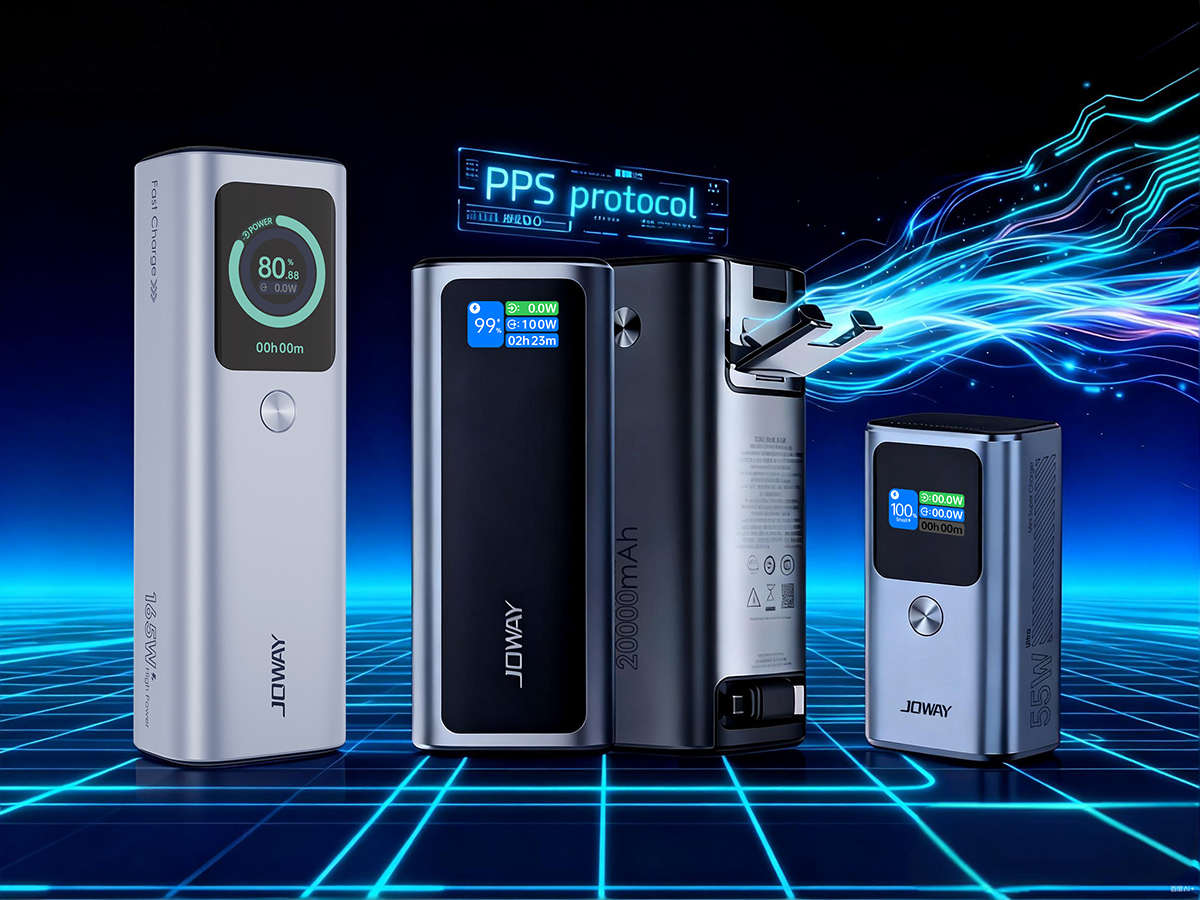
Joway is a specialist, direct-source power bank manufacturer. We offer end-to-end OEM/ODM services spanning solution design, R&D and manufacturing. If you are planning your next fast-charging product, get in touch. We can provide a tailored PPS fast-charging power bank solution straightaway.
5 FAQ – Frequently Asked Questions
Q1 What is PPS fast charging?
A: PPS fast charging is a fast-charging approach built on the PPS (Programmable Power Supply) protocol. As part of USB PD 3.0/3.1, it enables dynamic, fine-grained voltage adjustment during charging, delivering a more efficient and safer process. Devices such as chargers and power banks that support the protocol are considered PPS fast-charging devices.
Q2 Which phone brands support the PPS fast-charging protocol?
A: Many models from brands including Honor, Xiaomi, Redmi and Samsung are currently compatible with PPS.
Q3 Do laptops support the PPS fast-charging protocol?
A: PPS today is targeted primarily at phones and tablets. Laptops typically rely on PD Fixed fast-charging profiles, which remains the prevailing practice.
Q4 Are iPhones compatible with PPS fast charging?
A: iPhones do not support the PPS fast-charging protocol. Current models support PD Fixed profiles and the Apple 2.4 protocol.
Q5: Which is better—PPS or PD fast charging?
A: PPS forms part of the PD 3.0/3.1 specification. Consequently, any device that supports PPS will also support PD, whereas a device labelled “PD” may implement only the Fixed profiles and not PPS. In real-world use, PPS typically delivers higher efficiency and tighter thermal control and is widely regarded as the direction of travel for fast charging. For power banks aiming for a premium fast-charging experience, PD 3.0 or PD 3.1 plus PPS is the preferred solution today.

